22.02.2024 / 9:40 MEZ
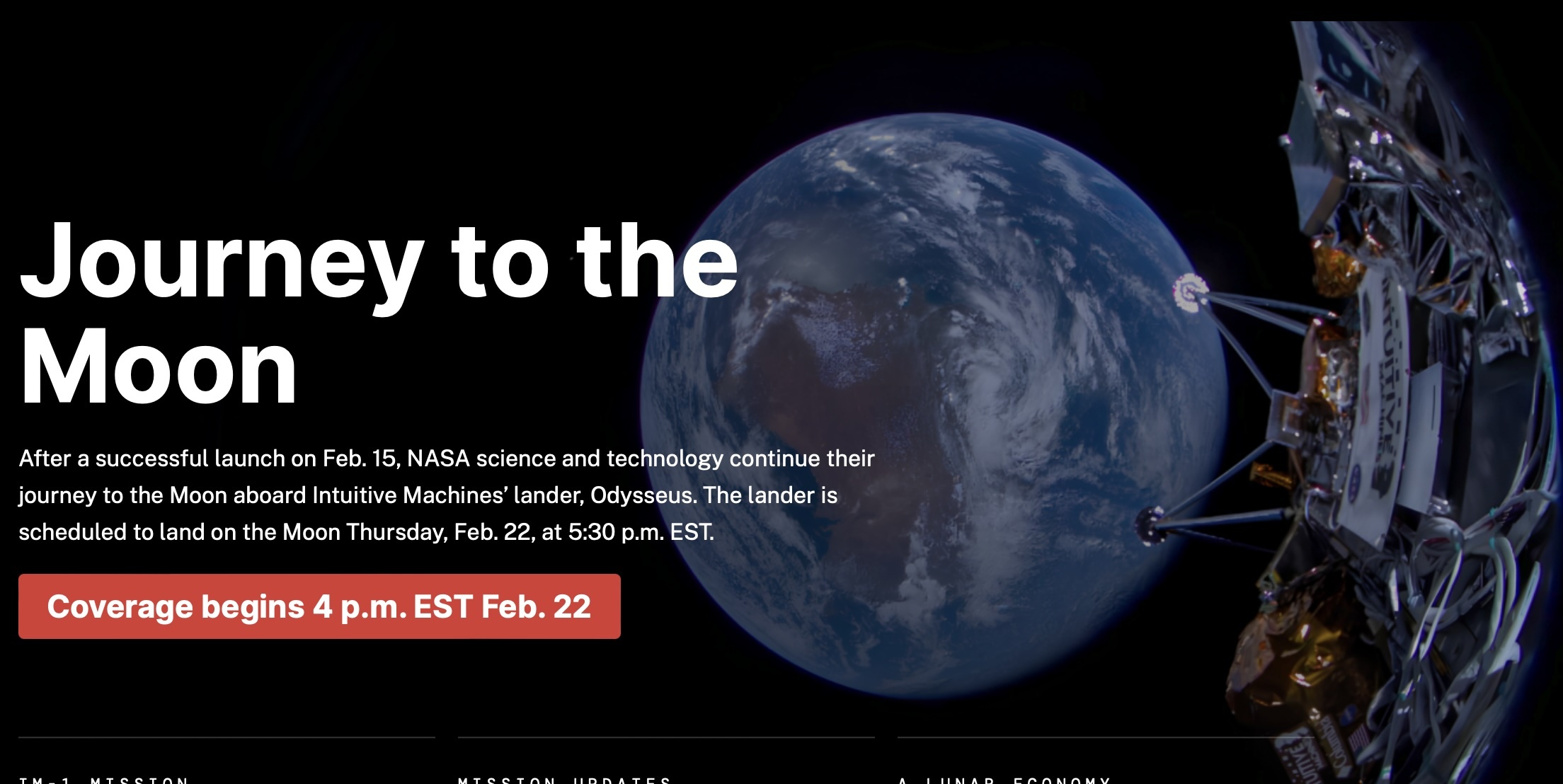
WASHINGTON — Intuitive Machines’ first lunar lander mission entered orbit around the moon Feb. 21, setting up a landing attempt in a day.
The company announced on social media that the Nova-C lander, named Odysseus, performed a 408-second burn of its main engine, placing the spacecraft into a circular orbit around the moon at an altitude of 92 kilometers. The maneuver, which changed the spacecraft’s velocity by 800 meters per second, was completed with an accuracy of 2 meters per second.
Intuitive Machines did not disclose the exact time of the burn in its announcement at 10:20 a.m. Eastern. The spacecraft had been on a trajectory that would have taken it about 100 kilometers from the moon around 9:40 a.m. Eastern. The insertion burn came after two trajectory correction maneuvers to refine the spacecraft’s path to the moon, with the company concluding a third planned maneuver was not needed.
The engine, which uses liquid oxygen and methane propellants, was tested in space for the first time in a commissioning maneuver Feb. 16. Company executives said before the launch that successfully completing that test would give them greater confidence that the engine would work as required for a soft landing.
With the spacecraft now in orbit, Intuitive Machines is now moving ahead with plans for a landing attempt on Feb. 22. The landing, near the Malapert A crater in the south polar region of the moon, was originally scheduled for 5:49 p.m. Eastern that day. The company said late Feb. 21 that it revised the landing time to 5:30 p.m. Eastern after flight controllers “analyzed the post-Lunar Orbit Insertion engine burn data and updated the anticipated flight maneuver timing.”
The IM-1 mission is carrying six NASA payloads through NASA’s Commercial Lunar Payload Services (CLPS) program under a $118 million task order. The spacecraft is also carrying six payloads for non-NASA customers, such as artwork, a data archive and a small astronomical telescope. If the spacecraft does land successfully, Intuitive Machines expects to operate it for about a week before the sun sets at the site, ending the mission.
If the landing is successful, Intuitive Machines will become the first non-governmental entity to successfully soft-land on the moon. The Beresheet lander by Israel’s SpaceIL crashed during an April 2019 landing attempt, while the HAKUTO-R M1 lander from Japan’s ispace crashed during its landing attempt in April 2023. Astrobotic’s Peregrine lander, which also had a NASA CLPS task order, suffered a propellant leak shortly after its Jan. 8 launch and aborted plans to orbit and land on the moon, reentering about 10 days after launch.
Despite the successful orbital insertion, shares in Intuitive Machines fell 15% on the Nasdaq exchange Feb. 21, including a sharp drop around the anticipated orbital insertion time. The company’s shares are still up nearly 90% from a week ago.
Quelle: SN
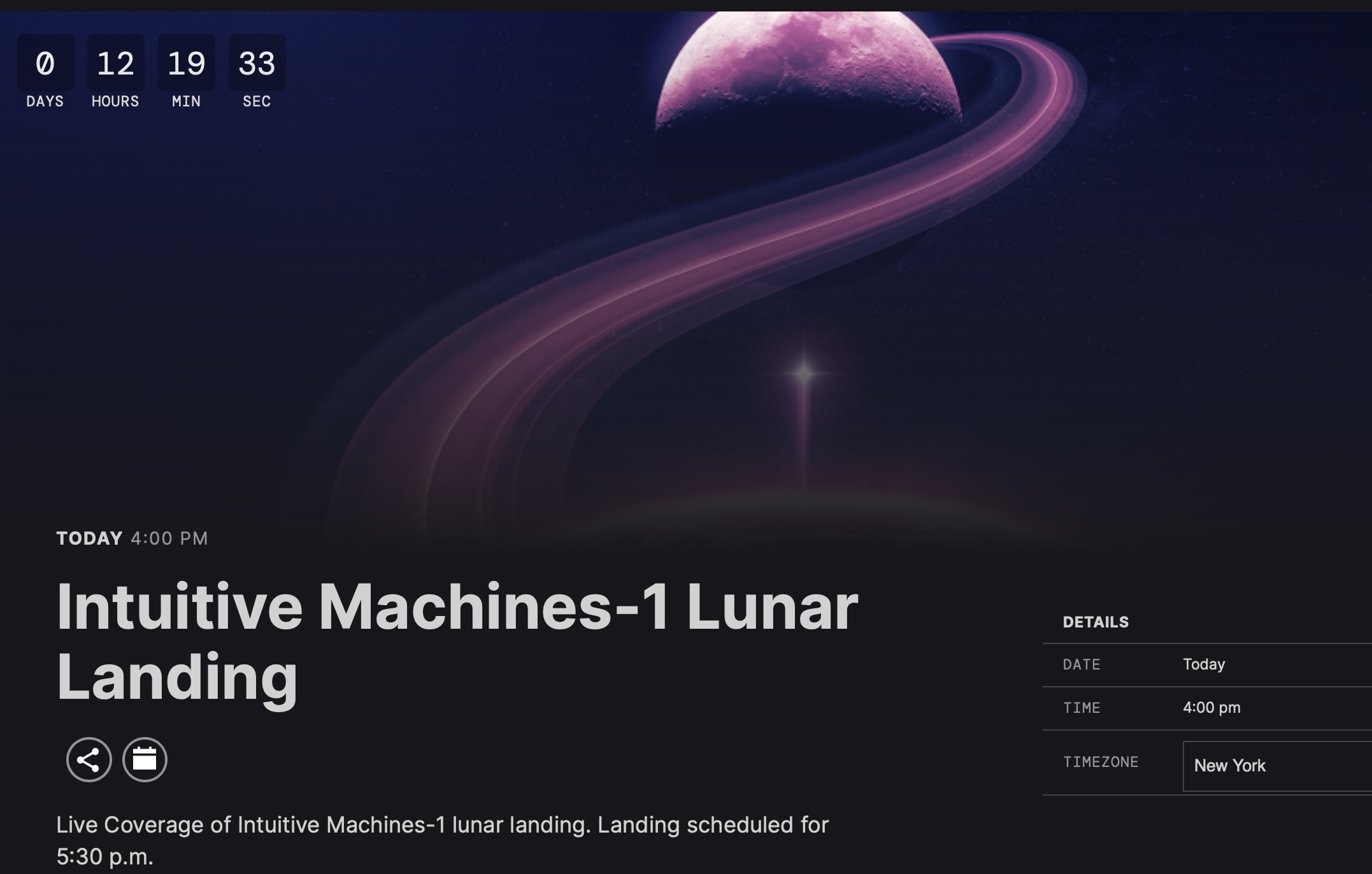
+++ 23:20 MEZ
+++
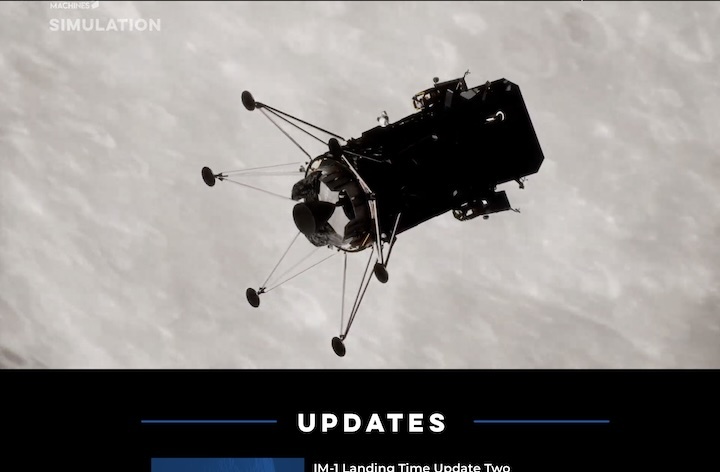
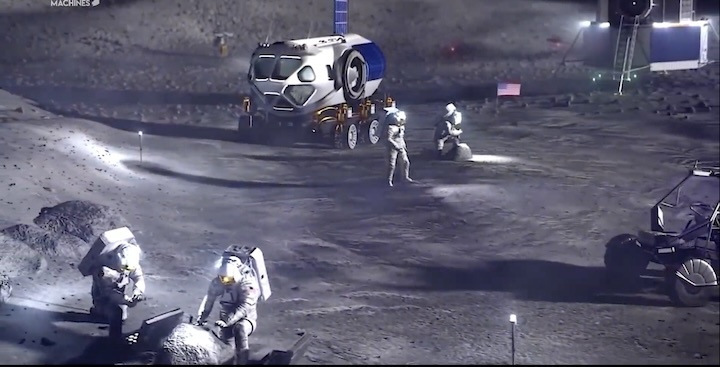
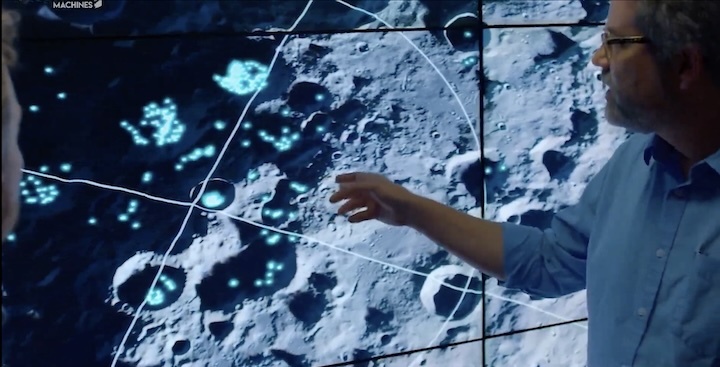

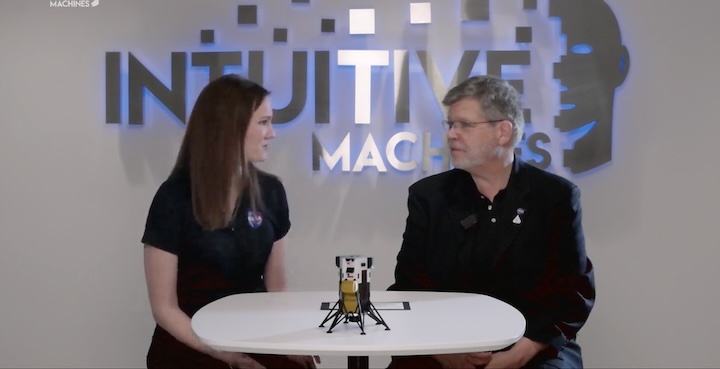


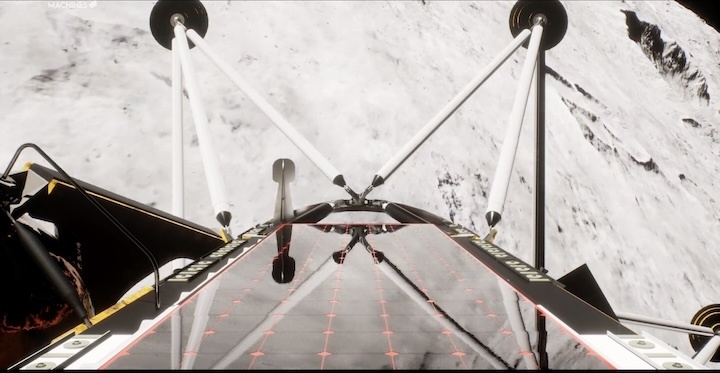
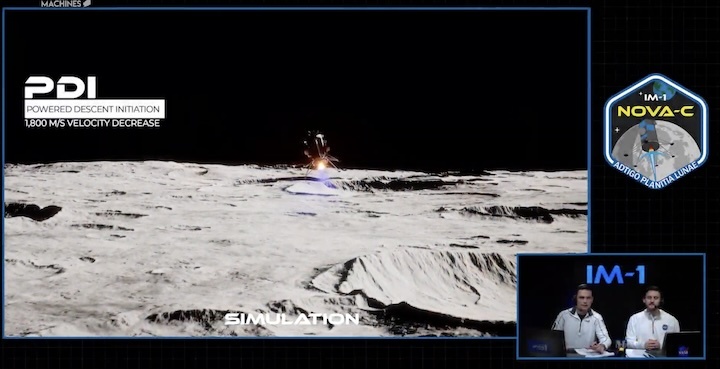
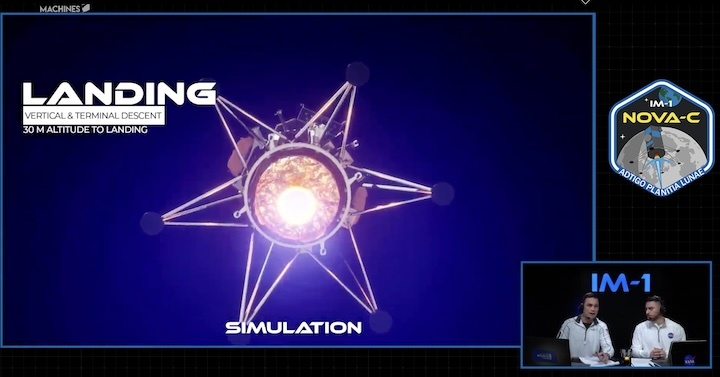
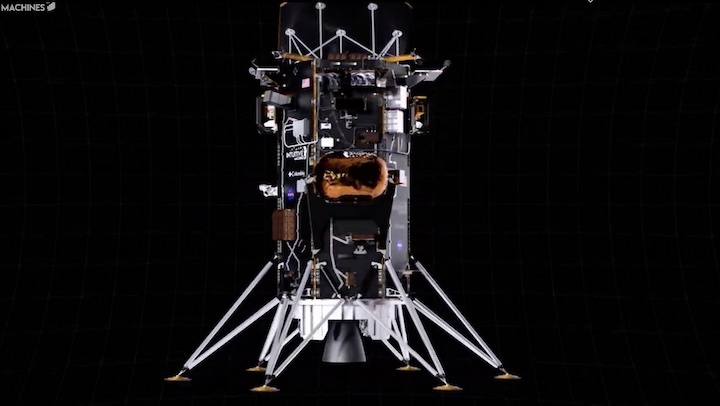
+++
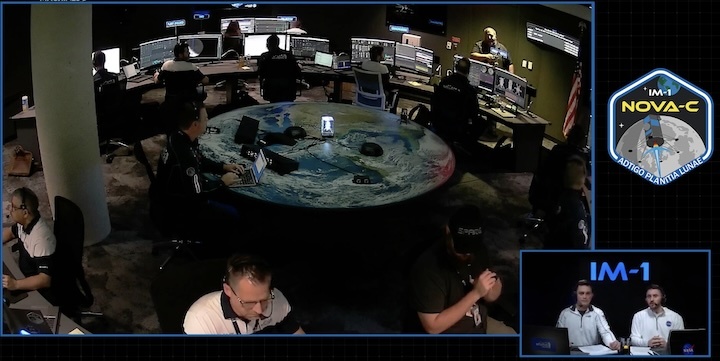
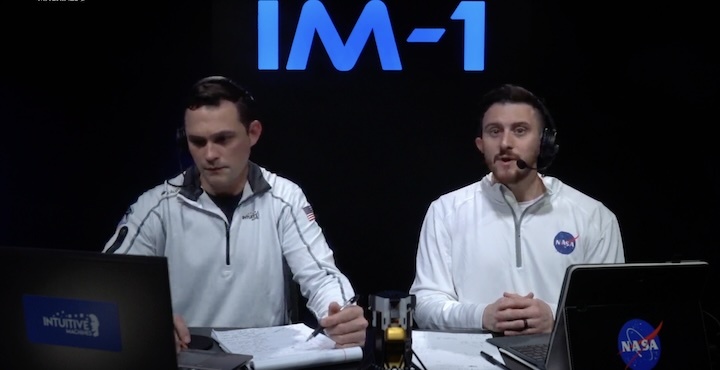
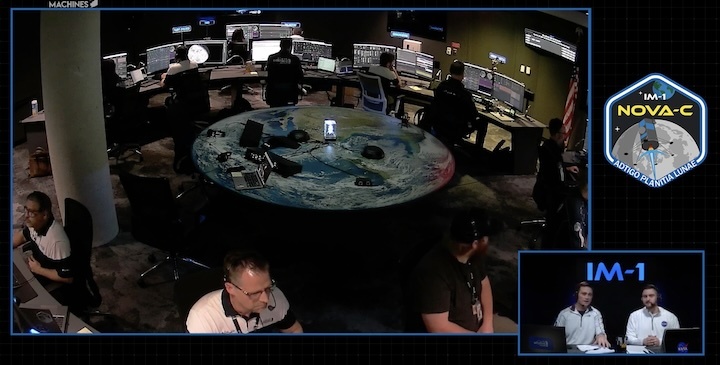
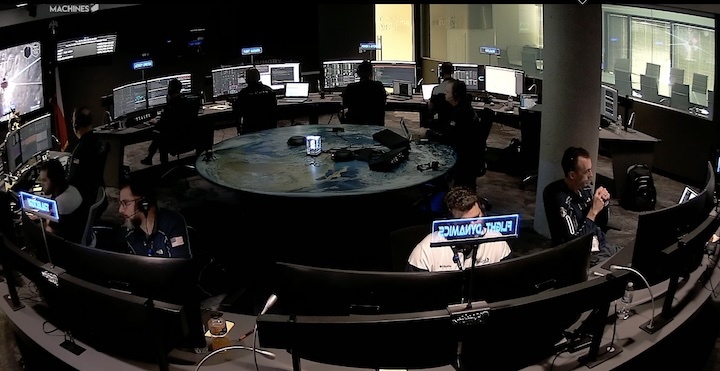
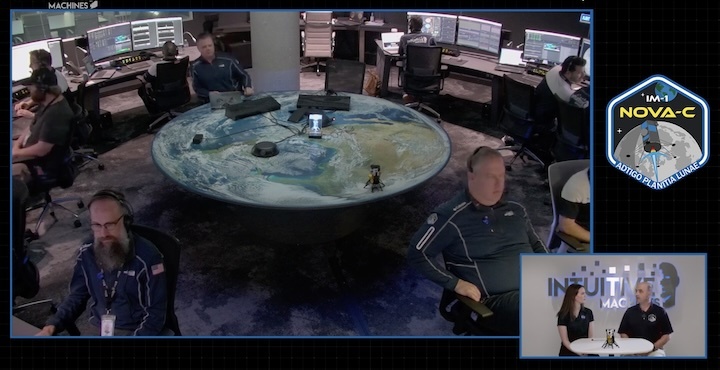
+++ 23.02.2024 / 0:05 MEZ
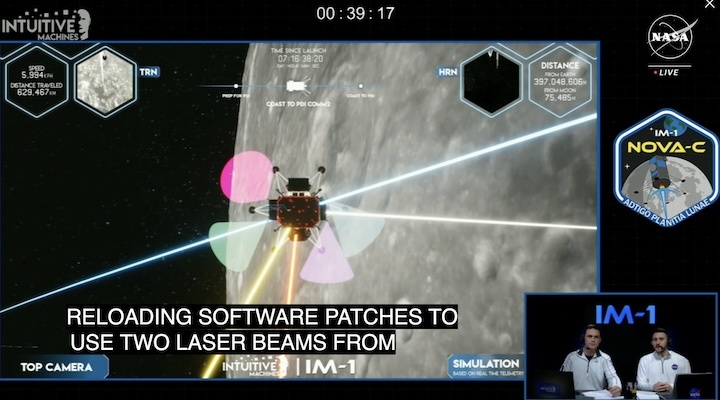
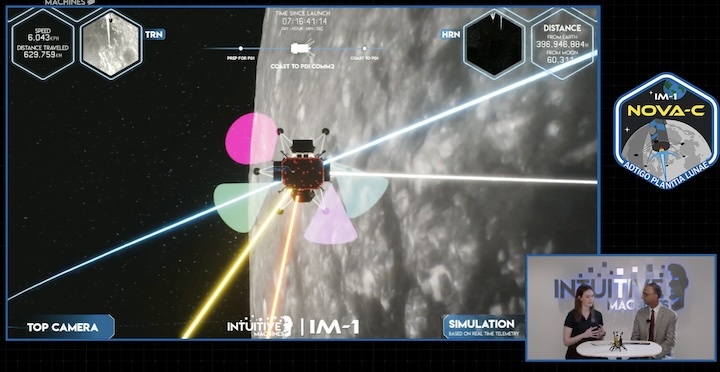
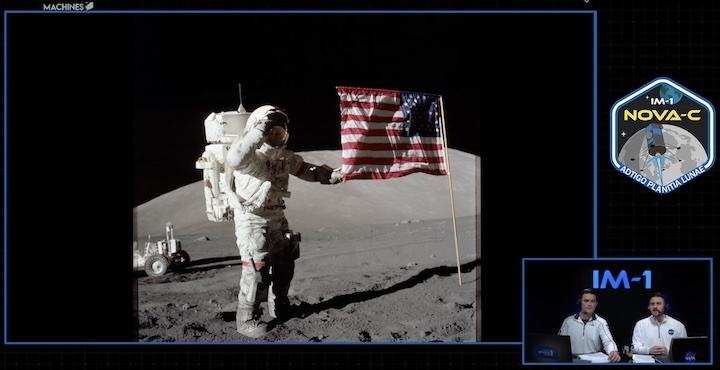
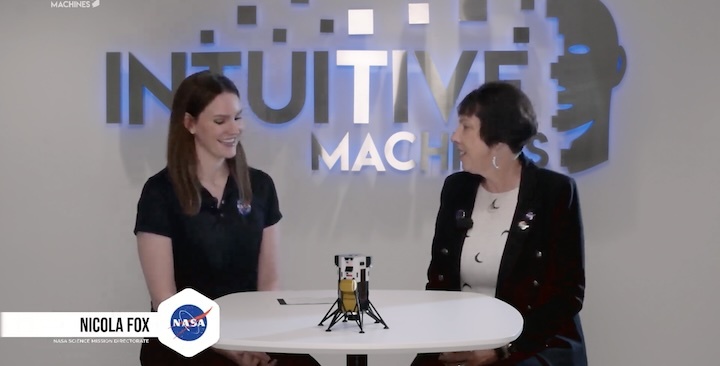
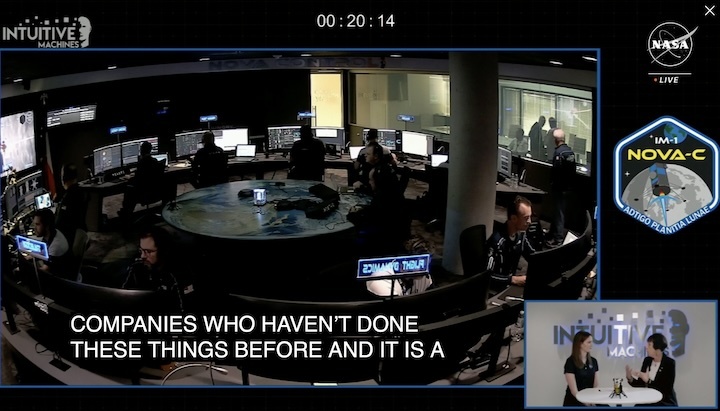
+++ 0:35 MEZ
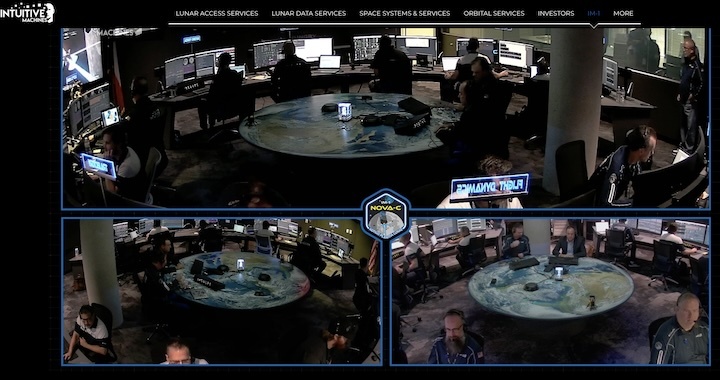
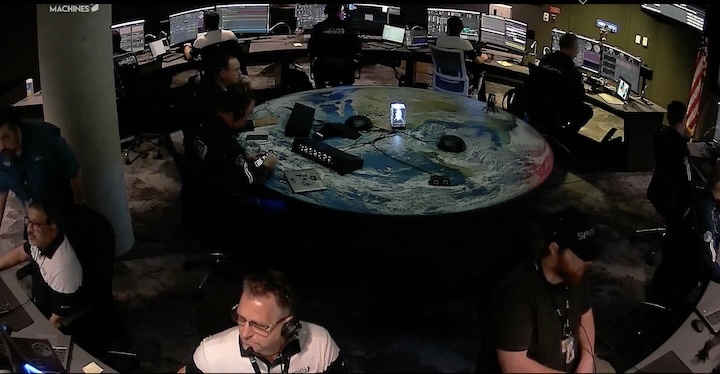
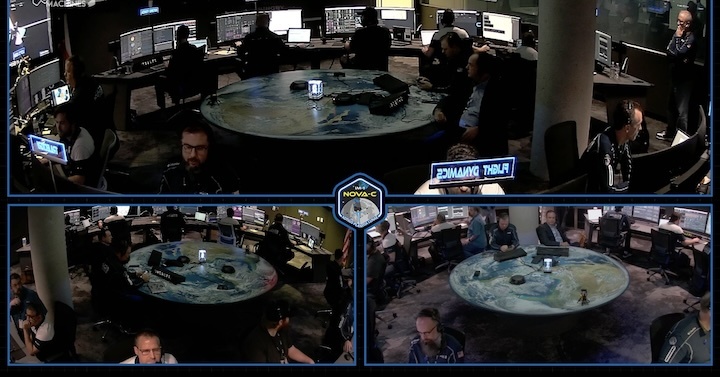
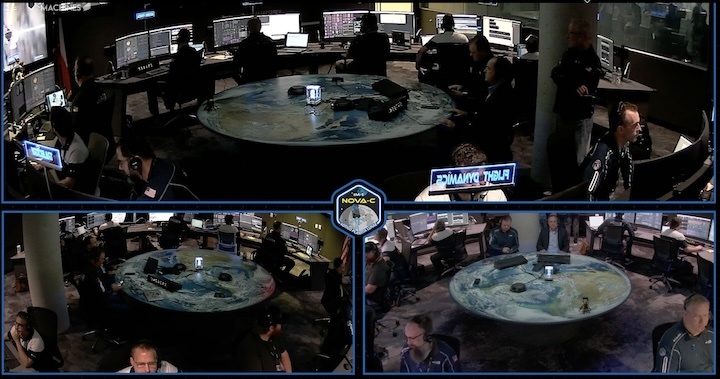
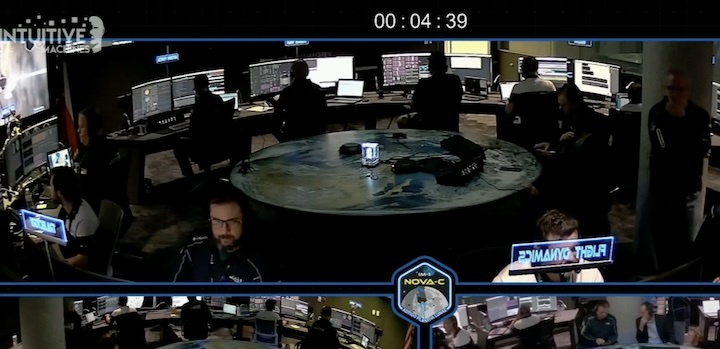
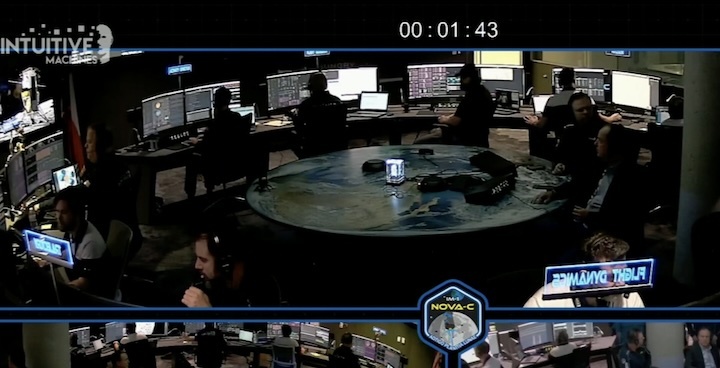
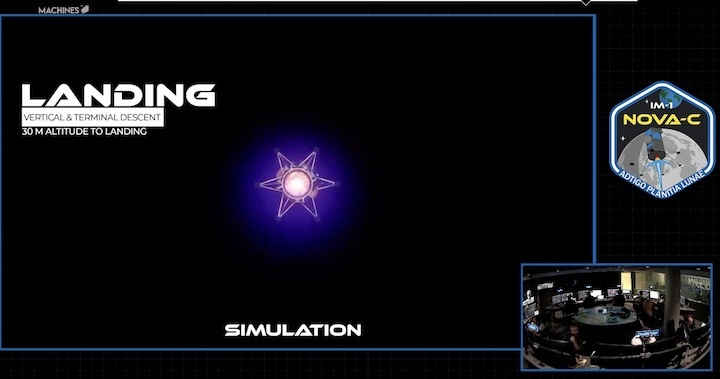
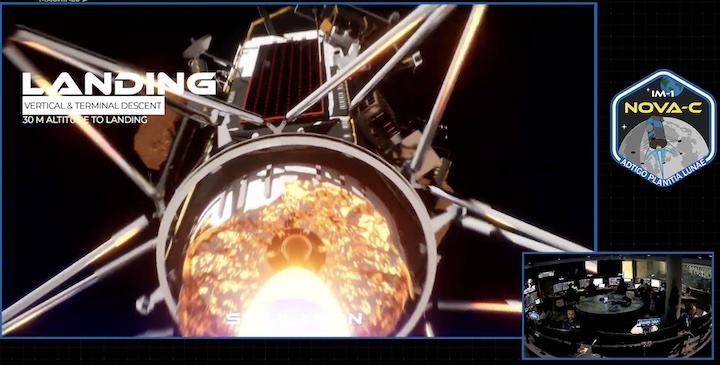
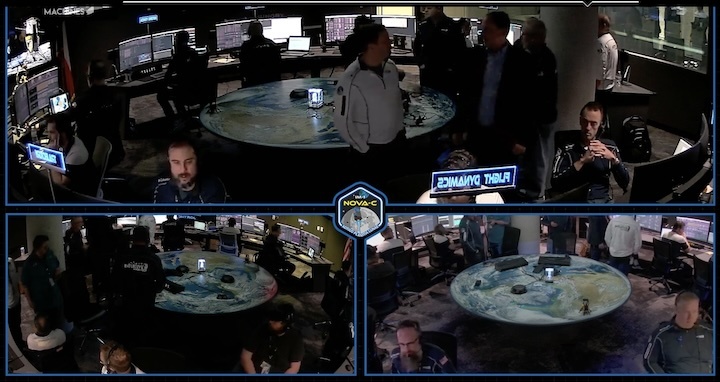
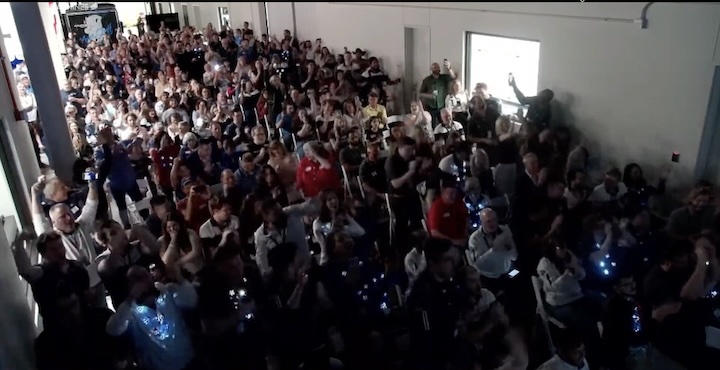
+++

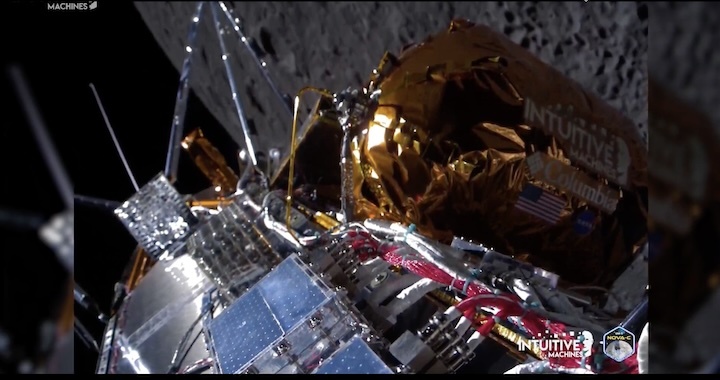
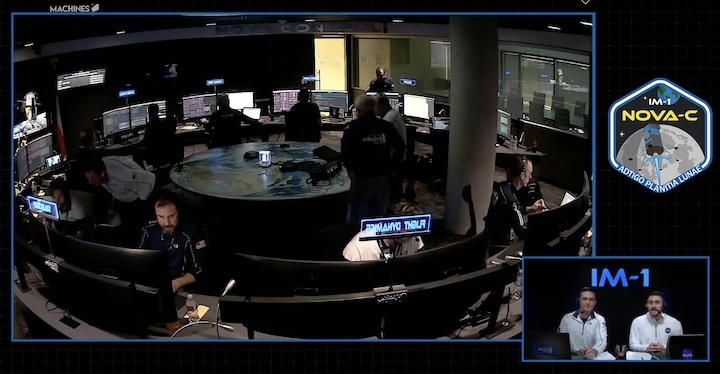
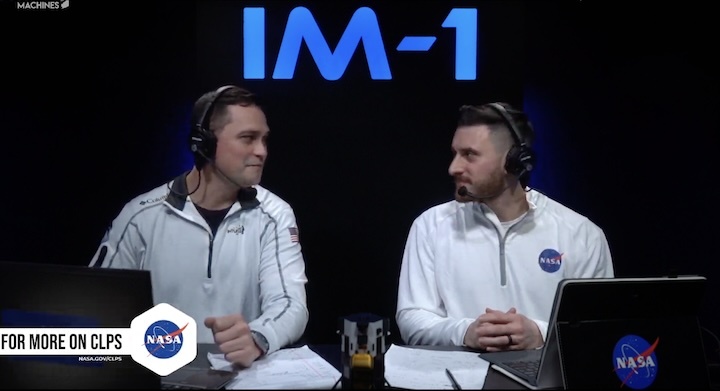
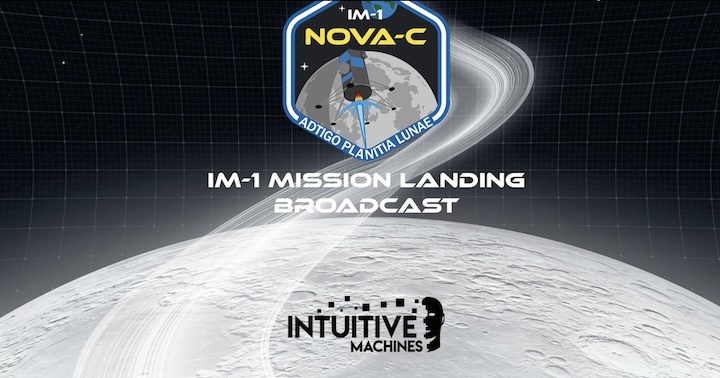
Quelle: IM, NASA
----
Update: 24.02.2024
.
US spaceship lying sideways after dramatic Moon touchdown
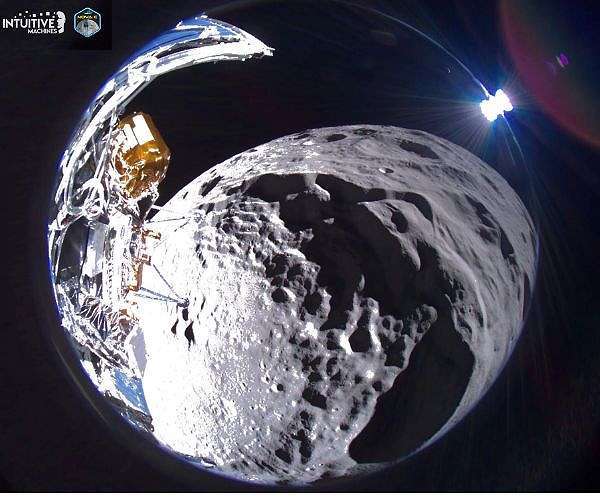
On Feb. 22, 2024, Intuitive Machines' Odysseus lunar lander captures a wide field of view image of Schomberger crater on the Moon approximately 125 miles (200 km) uprange from the intended landing site, at approximately 6 miles (10 km) altitude. Credit: Intuitive Machines
The first American spaceship to the Moon since the Apollo era is probably lying sideways following its dramatic landing, the company that built it said Friday, even as ground controllers work to download data and surface photos from the uncrewed robot.
The Odysseus spacecraft landed near the lunar south pole Thursday at 6:23 pm Eastern Time (2323 GMT), after a nail-biting final descent when ground teams had to switch to a backup guidance system and took several minutes to establish radio contact after the lander came to rest.
Intuitive Machines, the company behind this first-ever lunar landing by a private company, initially posted on social media that its hexagonal spaceship was upright, but CEO Steve Altemus told reporters on Friday that statement was based on misinterpreted data.
Instead, it appears that it caught a foot on the surface and tipped over, coming to rest horizontally with its top perched on a small rock -- taking some shine off an accomplishment widely hailed as a historic achievement.
A NASA probe called the Lunar Reconnaissance Orbiter should be able to photograph Odysseus over the weekend, helping pinpoint its exact location.
Altemus said that while solar arrays were on the top-facing side, the team's ability to download data from the science experiments on board was being hampered because of antennas facing downward that "are unusable for transmission back to Earth -- and so that really is a limiter in our ability to communicate and get the right data down so we get everything we need for the mission."
Because of complications associated with the landing, a decision was taken not to shoot out an external camera to capture the descent as it happened, according to Embry-Riddle Aeronautical University, which built the "EagleCam" device.
But the team will still attempt to deploy it from the ground to try to obtain an outside image of Odysseus.
- Improvised fix -
Odysseus is still considered the first success for a new fleet of NASA-funded lunar landers designed to carry out science experiments that will pave the way for the return of American astronauts to the Moon later this decade, under the Artemis program.
A moonshot by another American company last month ended in failure, raising the stakes to demonstrate that private industry has what it takes to repeat a feat last achieved by US space agency NASA during its manned Apollo 17 mission in 1972.
Underlining the technical challenges, Intuitive Machines' own navigation technology failed and ground engineers were forced to jury-rig a solution, hastily writing a software patch to switch to an experimental NASA laser guidance system that was intended to run only as a technology demonstration.
Altemus later revealed Odysseus' own laser system failed to turn on because someone had forgotten to flip a safety switch before takeoff, which he described as "an oversight on our part."
Confirmation of landing was supposed to come seconds after the milestone, but instead around 15 minutes passed before a faint signal was detected, enough to declare the spaceship was in one piece and had met its goal.
- Commercial Moon fleet -
NASA paid Intuitive Machines $118 million to ship six experiments under an initiative which delegates cargo services to the private sector in a bid to achieve savings and stimulate a wider lunar economy.
Odysseus also carries cargo for private customers, including a reflective heat wrapping developed by Columbia Sportswear and used to protect the spaceship's cryogenic propulsion tank.
The United States, along with international partners, want to develop long-term habitats on the south pole, harvesting ice there for drinking water -- and for rocket fuel for eventual onward voyages to Mars.
The first crewed landing under NASA's Artemis program is set to take place no sooner than 2026. China meanwhile plans to put its first crew on the Moon in 2030, opening a new era of space competition.
The mission was the fourth attempt at soft lunar touchdown by the private sector. Intuitive Machines joins the national space agencies of the Soviet Union, United States, China, India and Japan in an exclusive club of landing on the Moon.
Quelle: SD
